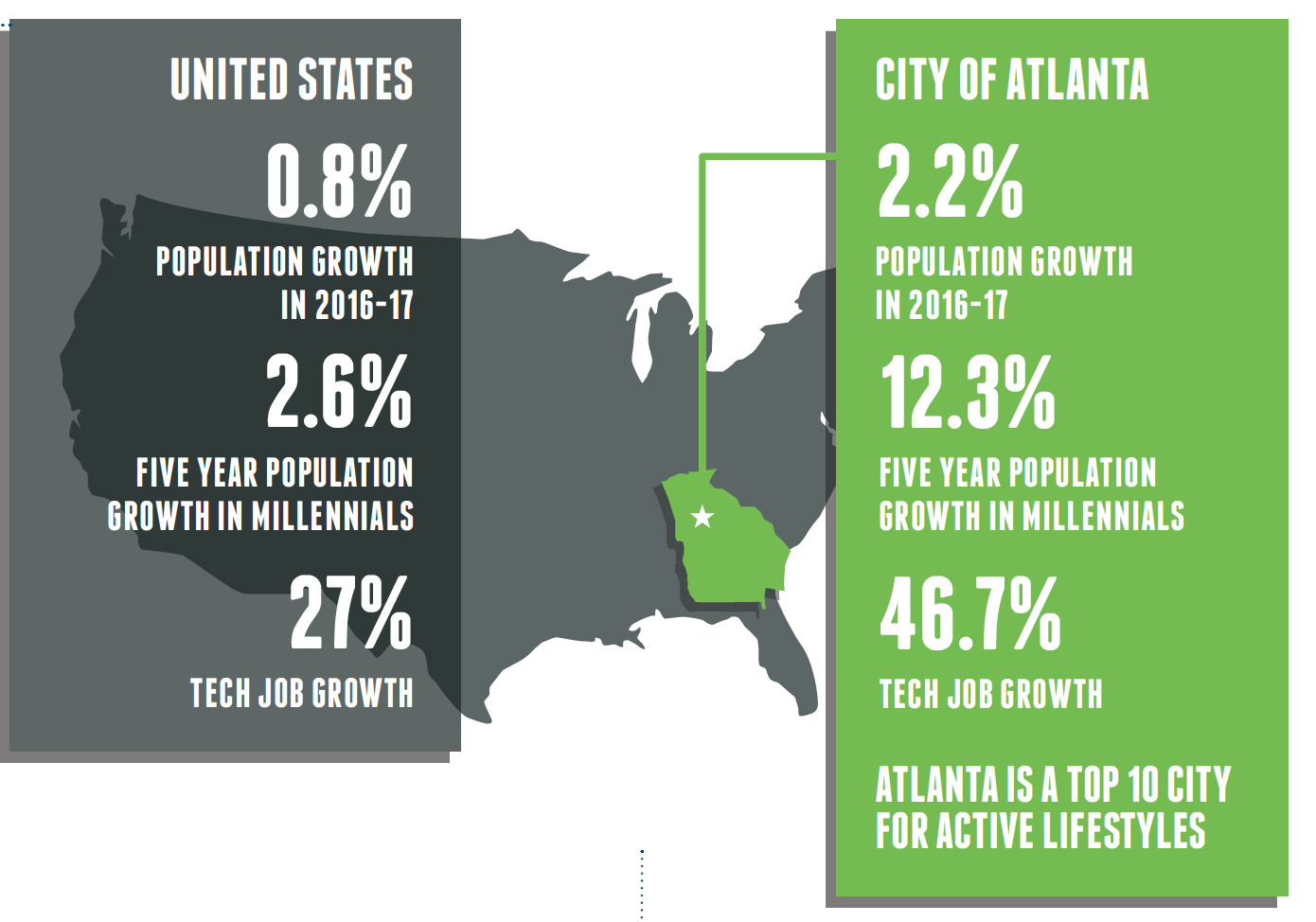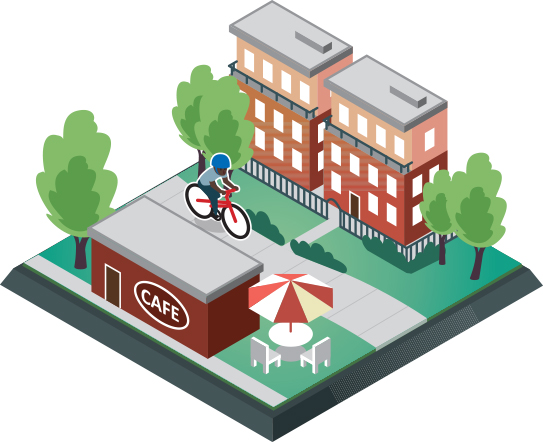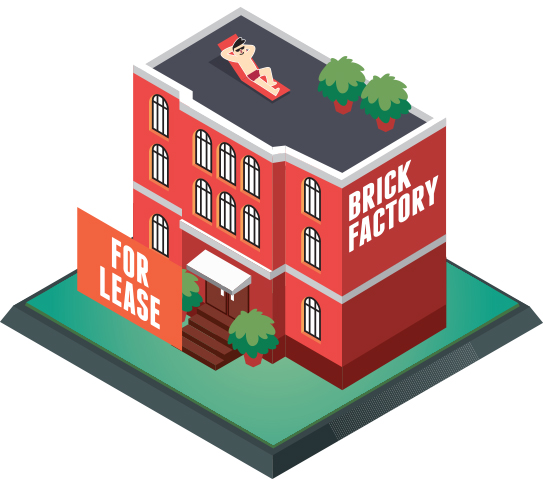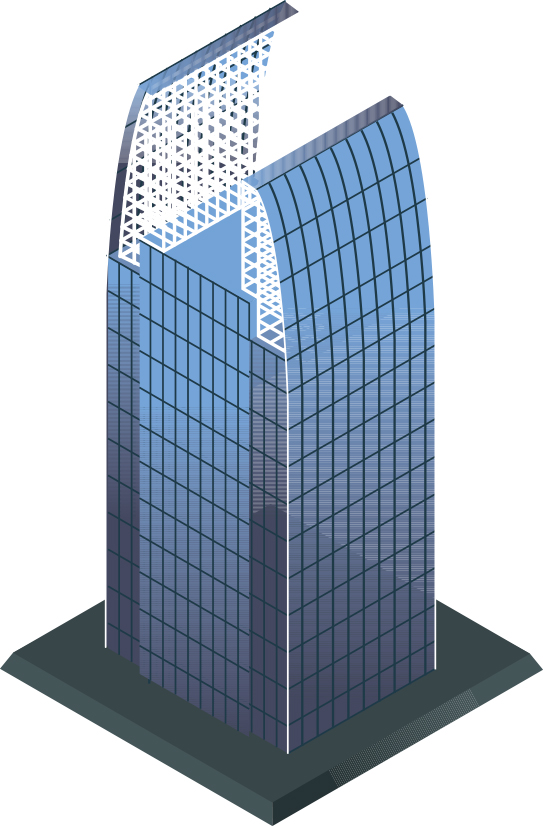 Business, like chess, offers many paths to success. A well-defined strategy is one approach. Another is taking advantage of a trend or unexpected opportunity. But, sometimes, there’s a chance to execute multiple options.
Business, like chess, offers many paths to success. A well-defined strategy is one approach. Another is taking advantage of a trend or unexpected opportunity. But, sometimes, there’s a chance to execute multiple options.
For Metro Atlanta, that chance is at hand.
There’s a right place, right time scenario playing out in ATL. The environment is increasingly ripe with opportunities in real estate development and investment. It’s a towering chance for success illustrated by growing corporate interests and reimagined urban spaces for work and play.
While other areas of the country continue to move slowly after the Great Recession, Atlanta, true to its history, has emerged from the ashes stronger and in position for long-term gain.
Emory Business explores and examines the pieces coming together for Atlanta’s next epic rise.
For the past nine years, any talk of real estate or new development has usually been accompanied by shudders or, at the very least, sighs of disappointment. But thanks to the recent economic upswing and increased job creation, cities across the country are getting a facelift and a population boost.
Atlanta is no exception.
First, let’s look at the numbers.
The strengthening economy is both reflected in and in some ways driven by real estate. Commercial real estate is big business. More than 410 million square feet of commercial real estate was created in the United States in 2016, with the capacity to house 1.1 million workers.
“Demand for industrial space is currently white-hot in every region of the country,” says Cason Bufe 10WEMBA, vice president of industrial development for Rooker, a company that, in recent years, has developed and leased approximately 1.3 million square feet of industrial space in Atlanta. Bufe notes that for 26 consecutive quarters, US industrial supply has not kept up with demand. This demand is being driven, in part, by e-commerce growth. Every month, the US population is buying more goods online. Companies selling or delivering those goods need more industrial space to accommodate growth. As one example, since July 2016, Amazon has committed to lease 2.1 million square feet of new industrial space in Jacksonville, Florida, alone.
Real estate construction in 2016 also hit a new high with more than $1.1 billion spent—the most since 2008. Those numbers are projected to rise again in 2017 as the economy continues to grow.
So long suburbs
Healthy numbers in corporate development create an urge to return to the city. Urban development is ramping up as developers realize a growing segment of the population does not want a house in the suburbs. “Atlanta has become a vibrant business hub and as a result has attracted a very diverse—in age and culture—workforce,” says Nancy Miller 88WEMBA, president of the national net lease investment group at Bull Realty. She also cites the climate and close proximity to major transportation as big selling points for the city.
 Atlanta paces ahead of the national average in overall population growth, boasting a 2.2 percent increase from 2016–17 against a 0.8 percent increase nationally. Metro Atlanta is one of just 11 major metropolitan areas growing at a pace of more than 1,000 persons per week.
Atlanta paces ahead of the national average in overall population growth, boasting a 2.2 percent increase from 2016–17 against a 0.8 percent increase nationally. Metro Atlanta is one of just 11 major metropolitan areas growing at a pace of more than 1,000 persons per week.
“There’s a national trend of people moving back into cities. They want to be close to where they work,” says Rob Brawner 06MBA, executive director of the Atlanta BeltLine Partnership. “They want to spend less time in their cars. They want to be able to connect with their neighbors, not just pull into a garage and not interact with others in their community. It’s all driving the move back to cities, and cities have to build the infrastructure to support that.”
Of course, younger professionals are attracted to the city. Atlanta is a hot spot for millennials, and over the past five years, the city’s millennial population has grown 12.3 percent. The national average is just 2.6 percent.
Atlanta’s growth also comes while maintaining affordability.
In the past five years, the city has lagged slightly behind the national average in disposable income increases (3.2 to 4.2 percent), but it remains attractive to home buyers. The median home price of $190,937 is well below the national average of $243,425, according to a trend report from PricewaterhouseCoopers.
“We have matured as a real estate community. For many years, Atlantans didn’t live in high-rise buildings of any type,” notes A. J. Robinson 77BBA, president of Central Atlanta Progress, a private, nonprofit corporation that strives to create a robust economic climate for Downtown Atlanta. “You had office buildings, but most things were three- to four-story apartments or condos, and now we’re getting to be like most cities, where people live way up in the air. And we’re building high-rise towers as residential. We’re sprouting up everywhere. And that’s dramatic.”

For instance, in February 2016, Post Properties broke ground on a $96 million, 438-unit apartment building called Post Centennial Park in Downtown Atlanta. The design features luxury, walkability, easy access to transit, and greenspace—all elements in demand for today’s workers.
“What’s happened is the next generation of the American workforce is now in the position to make decisions, and they’re saying, ‘No, we don’t want to drive to the next stop on the highway,’” says Jim Irwin 07MBA, president of New City LLC. “We don’t want to battle two hours of traffic a day to go back and forth from work.”
“Millennials are very big into low maintenance,” adds Aty Biswese 14WEMBA, managing director of Third Story Capital in Washington, DC. “They’re always on the move, so they want homes that are low maintenance.”
All eyes on Atlanta
“Atlanta has reemerged as a center for significant job creation and employment growth,” says Randy Evans 79MBA, managing director of Eastdil Secured. “Of course, we always have fundamentally been a central location in the Southeast, strategic to serve that market.”
 The proximity of Hartsfield-Jackson International Airport and a positive business climate has made the city highly attractive to companies like Mercedes-Benz, which relocated its headquarters from New Jersey, and State Farm, which is consolidating its regional operations on a new campus along Perimeter Center Parkway.
The proximity of Hartsfield-Jackson International Airport and a positive business climate has made the city highly attractive to companies like Mercedes-Benz, which relocated its headquarters from New Jersey, and State Farm, which is consolidating its regional operations on a new campus along Perimeter Center Parkway.
“Atlanta is a big service industry,” says Robinson. “We don’t make a lot of things in Atlanta. But we have a tremendous service economy, and we go all over the world both serving and being global companies. So the airport is critical to that.”
From 2010 to 2016 Atlanta has seen a 46.7 percent jump in tech-industry jobs. The number of high-tech service jobs in the US is expected to rise 56.4 percent by 2024, according to the Bureau of Labor and Statistics.
Clearly, businesses are following the workforce, and companies want to be in a place to attract good talent quickly and efficiently. Further, the City of Atlanta is making major improvements in the water and sewer program and investing in infrastructure. New taxes have been passed to improve roads and support mass transit.
Traffic disasters like the recent collapse of a portion of I-85 near Midtown and the buckling of a section of road on I-20 have exacerbated the need for improvements and increased the desire for expanded public transportation.
With Atlanta and Georgia already recognized as the healthcare IT capital of the nation, it wasn’t a surprise when a company like athenahealth Inc. expanded its operations in the city. The new home for this provider of cloud-based services for electronic health records was not a suburban office park, but Ponce City Market in the city.
Tech companies like athenahealth are leading patterns of real estate development. The desire for cool spaces has powered the preservation and redevelopment of historic properties throughout the city.
And the demand isn’t slowing.
Out with the new, in with the old
There is perhaps no better example of the new urban trends of adaptive reuse than the aforementioned Ponce City Market. The former City Hall East is a sprawling, two-million-square-foot structure that was once the Sears regional distribution center. Now it’s a mix of offices, retail stores, restaurants, and residential development.
 The award-winning development project is not exactly unique. It was built by Jamestown Properties, which modeled it after New York’s Chelsea Market. Yet it is in many ways a perfect expression of Atlanta’s changing real estate market.
The award-winning development project is not exactly unique. It was built by Jamestown Properties, which modeled it after New York’s Chelsea Market. Yet it is in many ways a perfect expression of Atlanta’s changing real estate market.
And an example of how timing is everything.
“If you had tried to do Ponce City Market ten years before, it wouldn’t have worked,” says Roy Black, director of the real estate program and a professor in the practice of finance at Goizueta. “People were still heading for the burbs, and we weren’t ready for it.”
Its success has spurred other developments, such as New City’s redevelopment of a Kroger shopping center just across the street from Ponce. Now called 725 Ponce, it will include the grocer and 360,000 square feet of office space. Like PonceCity Market, it will face out on the BeltLine, a redevelopment of a former rail bed that encircles the inner city.
“The new Kroger store has elected to raise the entire footprint to be level with the BeltLine and build a second direct connection,” explains Irwin. “It’s harder from an operational perspective to manage two entrances, but when you have north of two million people walking or biking in front of your store, that’s a material demographic you want to pay attention to.”
The BeltLine is one of the largest, most wide-ranging urban redevelopment programs active in the United States. Eventually it will connect 45 in-town neighborhoods by way of a 22-mile loop of multiuse trails, streetcars, and parks. It has spurred the adaptive reuse of historic industrial spaces, like the Atlanta Stoveworks. Long-neglected areas such as Krog Street have also become trendy sites for mixed-use development.
 According to the Atlanta BeltLine website, one walkable development valued at $80 million is planned near Decatur Belt Railway and calls for a mix of residential, loft office, restaurant, and retail space, while another $1.1 billion worth of projects is estimated to be completed around the BeltLine in the next 18 to 24 months.
According to the Atlanta BeltLine website, one walkable development valued at $80 million is planned near Decatur Belt Railway and calls for a mix of residential, loft office, restaurant, and retail space, while another $1.1 billion worth of projects is estimated to be completed around the BeltLine in the next 18 to 24 months.
“The amount of development you’re seeing around the BeltLine, the number of cranes in the air, the cachet of the project . . .” says Brawner. “All of that is a clear sign that it’s a very attractive place to be developed.”
More than $3.7 billion of new, private development has sprung up within a half mile of the BeltLine since it was announced in 2005. In addition, about $450 million of public and private dollars have flowed into the creation of infrastructure, including parks and trails that now link Atlanta’s inner neighborhoods.
“People who work and live near the BeltLine are afforded the opportunity to live their lives in a way that more closely reflects their personal priorities,” observes Irwin. “It is actually possible today for someone in Atlanta to live without a car. Even ten years ago, you’d say that’s ridiculous.”
The popularity of the BeltLine is reflected in both the growing number of homes and residential units being built nearby and the millions who use it already.
“That’s what my students want overwhelmingly,” says Black. “I poll them every semester, just to see where their heads are in terms of what they want for jobs and where they want to live. The trend has been that they want to live in an urban environment, and they like the walkability concept. They like to live near a MARTA station or near a subway station in New York. Those are our two biggest markets, New York and Atlanta. That’s what they want.”
Lights, Camera, Atlanta
One of Atlanta’s most unexpected real estate development trends is the rapid growth of the state’s film and television production industry. When movie companies first began coming to the state, they desired scenic locations in the North Georgia Mountains.
The passage of Georgia’s film tax credit—coupled with other states repealing their own—has transformed Georgia into the third-biggest film capital in the nation after Hollywood and New York. The rush of productions has created a $2.2 billion industry (direct spend) in the state, but with an economic impact of $7 billion. This comes with the rapid growth of film studios, such as Tyler Perry’s facilities in South Atlanta and Pinewood Studios in Fayetteville. More studios are being built throughout the state in places like Covington and Savannah.
Lynn Hylden 16MEMBA, associate producer at Atlanta-based POPfilms, has seen that growth first-hand. “I think that the growing investment in infrastructure in terms of production stages, crew, available gear, and technology and the reputation of Atlanta as being a friendly and overall great place to bring production to, is really helping sell Georgia to the studios and big decision-makers in Los Angeles,” she told Atlanta Business Chronicle.
Her company has produced three television series and two movies in its 100,000-square-foot warehouse, which used to be a Staples distribution center.
Vibrant growth is mirrored in the high demand among Emory students to enroll in the Film and Media Management concentration, spearheaded by co-creators Andrea Hershatter, senior associate dean and director of the BBA Program, and Matthew Bernstein, the Goodrich C. White Professor of Film and Media Studies and chair of the Department of Film and Media Studies.
The program is open to BBA students and Emory College students majoring in film. Approximately 50 students are enrolled as juniors and seniors, and demand continues unabated.
“The growth of the media entertainment industry in Georgia has greatly enriched our instruction and programming,” notes Bernstein. “We had the Oscar-nominated cinematographer Roderigo Prieto speak to our students about his work after he completed shooting Passengers (starring Jennifer Lawrence and Chris Pratt) in early 2016. Gareth Unwin, one of the Oscar-winning producers of The King’s Speech, spoke to our students in December 2016 and even passed around his Academy Award to the students.”
Bernstein says the growth in the industry is bringing a rise in internship opportunities and creating the need to formalize the process. Graduates of the concentration are finding work in the industry and more than half of them take jobs outside of Georgia, which shows the depth of the coursework.
Says Bernstein: “From the film and media studies side, the concentration, combined with our offerings in screenwriting and filmmaking, within a liberal arts context (rather than a film school) is a tremendous draw— even to Los Angeles students whose parents are in ‘the industry.’”
Goizueta gets real (estate)
The extensive development of real estate in Metro Atlanta and the many companies that make it happen have produced an excellent training ground for Goizueta students.
 “We’re switching more to an experiential-oriented education rather than strictly classroom,” says Black. “Atlanta is a super laboratory in which to do that. We have a base in excess of 300 Emory real estate alumni working in the industry in Atlanta and 300 professionals in New York.”
“We’re switching more to an experiential-oriented education rather than strictly classroom,” says Black. “Atlanta is a super laboratory in which to do that. We have a base in excess of 300 Emory real estate alumni working in the industry in Atlanta and 300 professionals in New York.”
These practitioners come to campus for lectures and meetings with students and often provide opportunities for internships and employment. The vibrant alumni network has an affinity group that meets to share best practices and provide a forum that students can take advantage of.
Also providing insight and access to students are the industry insiders who teach in the program.
Marvin Banks, adjunct professor and president of M. Banks Realty Partners, feels strongly that many of his experiences are teachable. He says providing this knowledge at an earlier age in the students’ careers gives Goizueta students an edge to outperform their peers.
The experiences Banks brings include $8 billion of transactional experience in the private and public arena involving property acquisition, development, disposition, operations, finance, organizational infrastructure building, M&A, and more.
“Essentially my class is taught from the perspective of senior management,” he says. “I strive to impart the importance of thought, of curiosity, of not accepting conventional wisdom at face value. The decisions we make are all we can control. So how do we give ourselves a chance to make better-than-average decisions?”
Further, Banks says real estate has a lot of grays, and knowing how to navigate those areas is a big differentiator. Students also gain practical experience through working with a unique, student-run real estate private equity fund. Using money from the Emory University endowment fund, they make investments in publicly traded REITs (Real Estate Investment Trust).
The fund enables students to gain a better understanding of how private equity aligns with real estate development. By analyzing projects in depth and conducting market research, they gain an understanding of the value of a particular investment before making a decision.
“The students gain experience managing part of the Emory endowment,” explains Black. “[The student fund has] grown tenfold since we started four years ago. That’s a great talking point for the students when they go out to interview.”
For an alum like Meredith Farahmand 14BBA, a senior real estate investment analyst with PGIM Real Estate Finance in New York, the depth of programming continues to benefit her.
 “I received an exceptionally strong foundation of key terms and valuation methods in my real estate classes at Goizueta,” says Farahmand. “This foundation was not only established through traditional lectures, homework, and exams, but also with hands-on projects that allowed me to apply my new skills and know-how in a real-world setting. I credit these simulations for giving me the confidence needed to be ‘day-one ready’ in my first position out of college.”
“I received an exceptionally strong foundation of key terms and valuation methods in my real estate classes at Goizueta,” says Farahmand. “This foundation was not only established through traditional lectures, homework, and exams, but also with hands-on projects that allowed me to apply my new skills and know-how in a real-world setting. I credit these simulations for giving me the confidence needed to be ‘day-one ready’ in my first position out of college.”
This type of career enhancement and preparedness is the backbone of the program. Just as Atlanta is attracting new workers and business by embracing a new landscape, the real estate program and Goizueta are equally poised to benefit from such a thriving and growing city and the industry professionals, alumni, and friends who invest in the future.











